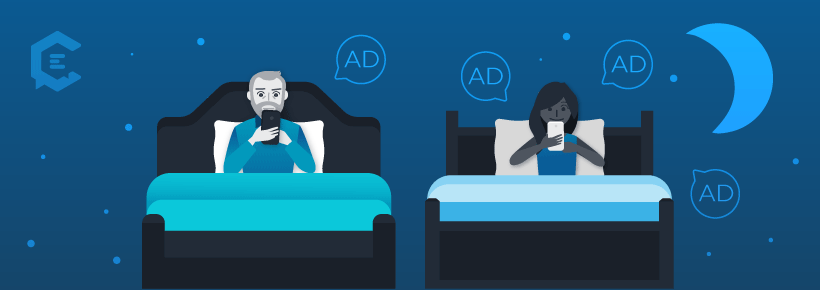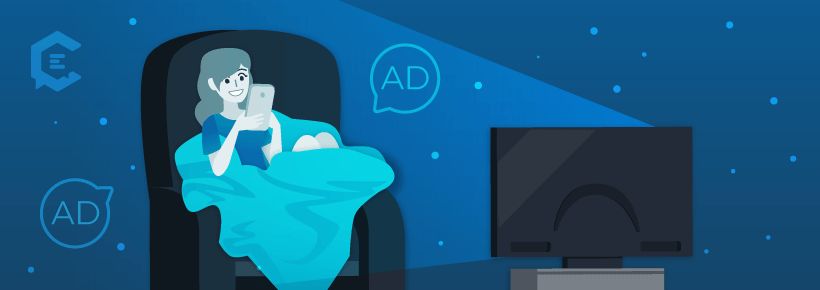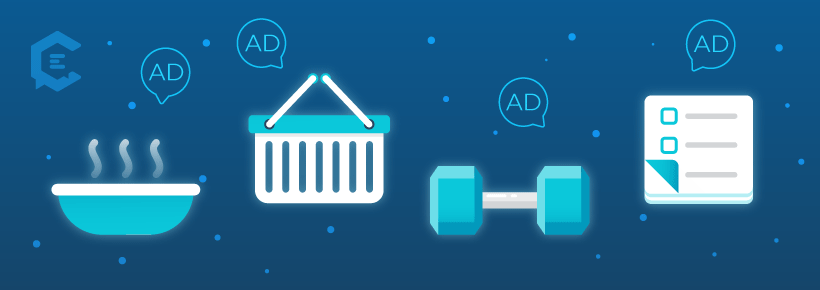Is your 2019 shaping into a great year for your digital content creation and marketing efforts? If yes, keep reading for more insights to keep you on the top of your game. If no, perhaps you are just a couple small adjustments from a breakthrough. Take a look at this week’s Content Radar for the news and updates that might help put you over the top.
 Study: Don’t sleep on mobile ads’ effectiveness at bedtime.
Study: Don’t sleep on mobile ads’ effectiveness at bedtime.
As a content creator, your goal is probably to create or promote content in such a way that causes your intended audience to stop in its tracks and give full attention to your content. The reality of things, however, is that your content might only rarely make anybody stop and give you their full attention. So, instead of counting on creating content that stops users, a new study proposes your best bet might be to change your ad distribution tactics to reach intended audiences when they have already stopped.
According to an Aki Technologies study of more than 1,000 adults in the United States, there are two time periods during which mobile users are most receptive to mobile ads: while in front of the TV and before they fall asleep in bed. While both of these times are when users are not especially physically active, there are also some differences that make these moments unique from one another.
Bedtime
A little more than half of respondents (51 percent) said they are receptive to mobile ads while in bed at the end of the day. Of course, the way you use this information should also be considered with the audience you are trying to reach. While Gen X respondents were exactly on average with 51 percent of them saying they are responsive to mobile ads at bedtime, only about 40 percent of baby boomers responded the same. Conversely, younger generations are most likely to be influenced by mobile ads at bedtime — with 63 percent of millennials and 72 percent of Gen Z affirming the effectiveness of mobile ads at that time.
TV time
An even greater number of respondents (59 percent) said they are receptive to mobile ads while watching TV on a big screen while in their home. However, as is true with the bedtime responses, the age demographics of users makes a difference in how they respond to mobile ads while in front of the television.
The easiest audience to reach with mobile ads while they are watching TV seems to be millennials — with nearly 2/3 (66 percent) claiming they are responsive to mobile ads while they multi-task during their TV watching and mobile browsing sessions. On the other hand, Gen Z (55 percent), Gen X (57 percent) and baby boomers (53 percent) are not as likely as millennials to be receptive to mobile ads while they watch TV.
What else to keep in mind?
Some other moments when mobile users are receptive to mobile ads include the following: while eating a meal (36 percent); while shopping in a store (25 percent); while exercising (24 percent); and while running errands (21 percent). For best results with mobile ad spend efforts, marketing leader Gary Vaynerchuk says that marketers need to continue to keep the following in mind:
“Businesses need to start making ads in a much greater volume that are designed for different demographics and even sub-demographics that can relate to a specific ad, instead of one extremely broad message that nobody really connects with.”
As you consider not only who your audience is, but also where they are seeing your mobile ads, you may see yourself making inroads that you previously struggled to develop.
 Salesforce is now offering tools that allow users to build mobile apps without developers. The company has also rolled out Mobile Publisher, which allows admins to easily submit the created apps to the iOS App Store or Google Play.
Salesforce is now offering tools that allow users to build mobile apps without developers. The company has also rolled out Mobile Publisher, which allows admins to easily submit the created apps to the iOS App Store or Google Play.
 Marketers can now cross-promote Facebook Events in Facebook Stories. Users who come across a story with a cross-promoted event may tap to go the event page, where they can show their desire to join or attend an event.
Marketers can now cross-promote Facebook Events in Facebook Stories. Users who come across a story with a cross-promoted event may tap to go the event page, where they can show their desire to join or attend an event.
 YouTube introduces “Swipey Watch” on its mobile app. The feature allows users to swipe through videos to find the next piece of content they want to consume. Users may swipe forward to a new video — or backward to a previously watched video.
YouTube introduces “Swipey Watch” on its mobile app. The feature allows users to swipe through videos to find the next piece of content they want to consume. Users may swipe forward to a new video — or backward to a previously watched video.
 More than half of users’ time on mobile devices is spent on social media and messaging apps. About 15 percent of users’ time on mobile devices was spent on video viewing and editing apps, and 10 percent was spent on games.
More than half of users’ time on mobile devices is spent on social media and messaging apps. About 15 percent of users’ time on mobile devices was spent on video viewing and editing apps, and 10 percent was spent on games.






